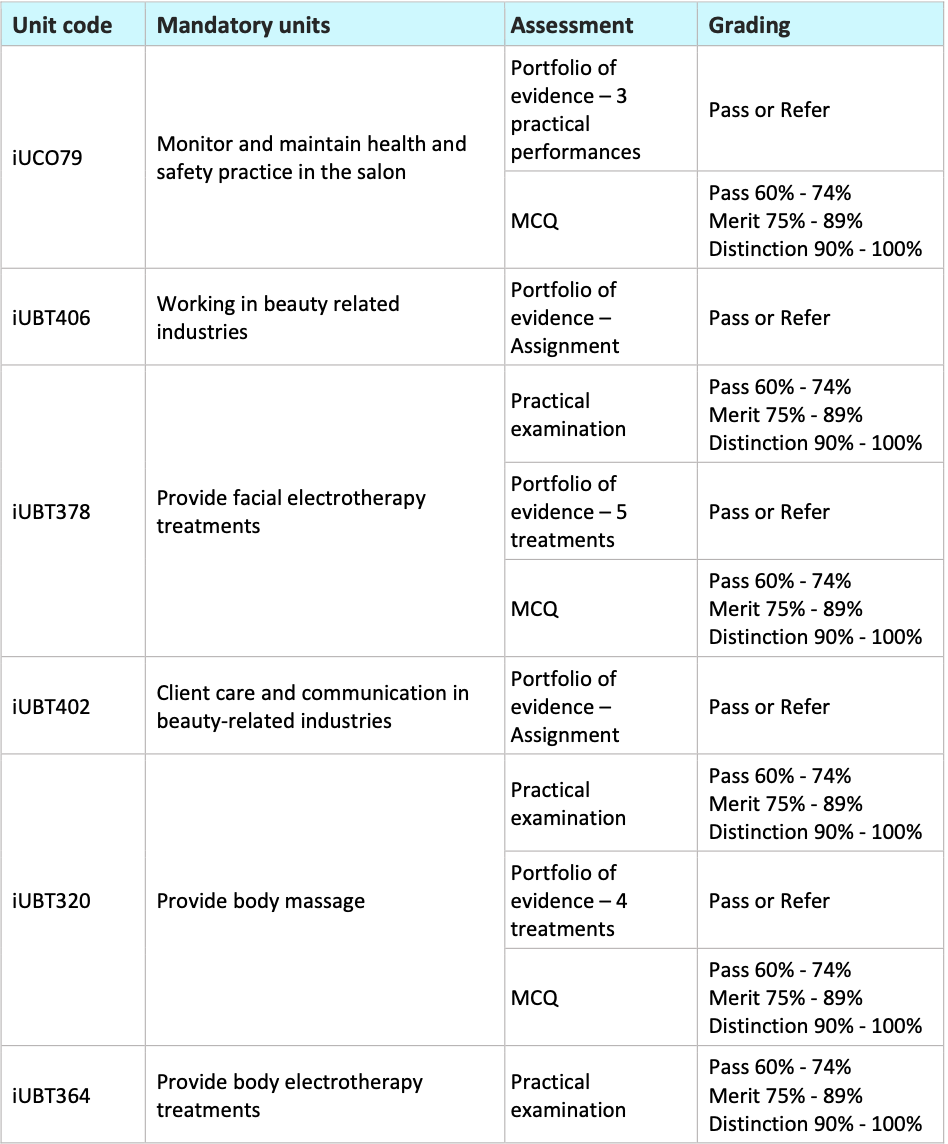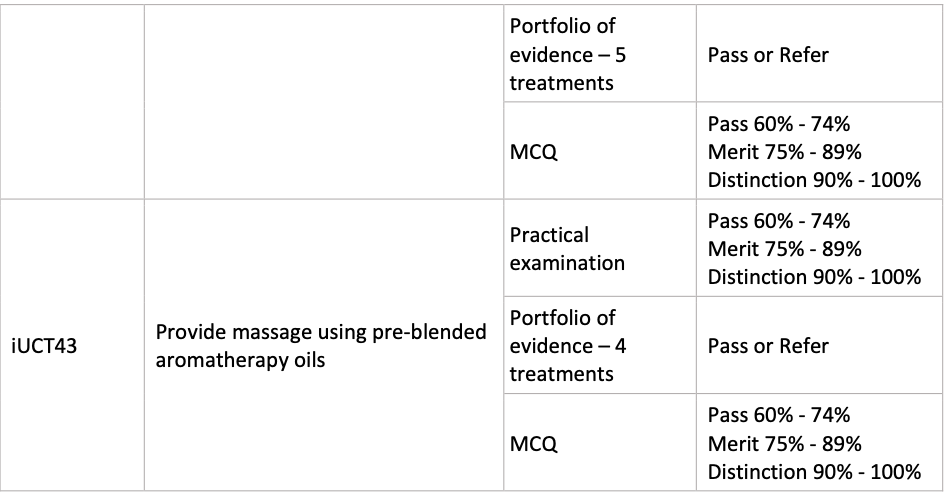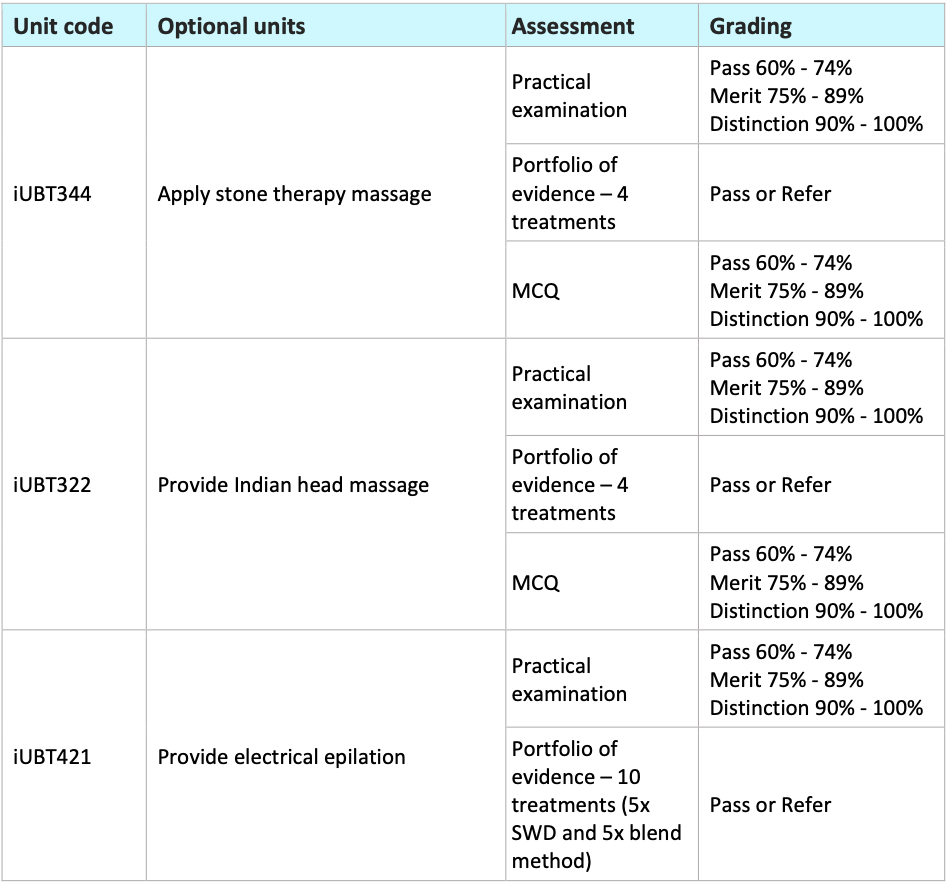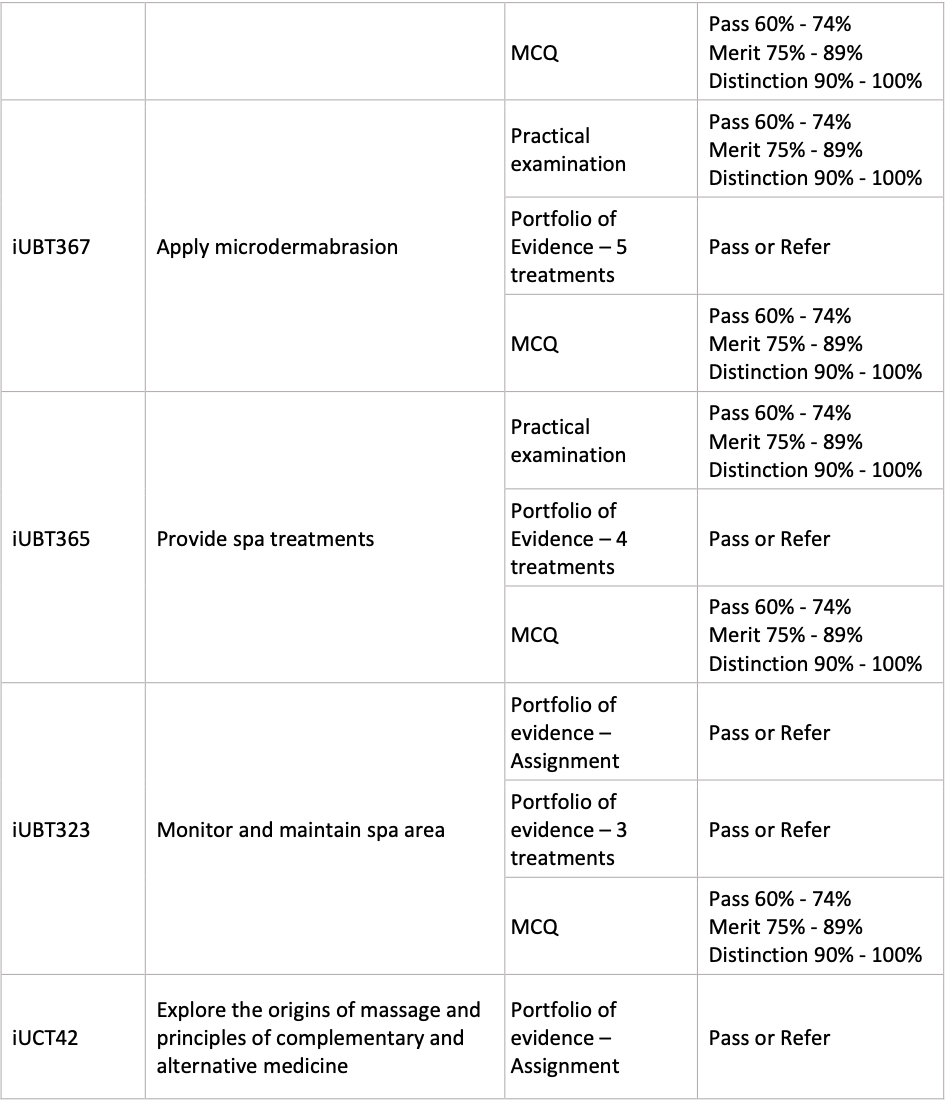Diploma in Advanced Beauty Therapy
Courses
NEW
Level 3 (RQF) NQF IE Level 5
Cost: €6,000
3 - 4 days per week
Timetable: 09:30 - 16:00 Monday - Thursday
Aims and objectives
This course covers ITEC Body Massage with A&P, Body Massage using pre-blended oils, Body Electrotherapy treatments, Facial Electrotherapy, Indian Head Massage and Electrical Epilation. (There is an option to add ITEC Level 2 Certificate in Skin care)
Consultation techniques – to include treatment plan, contra-indications and contra-actions, identifying general body types, different types of body fat and common postural faults, carrying out skin analysis and identifying skin types and conditions. Body massage – to include consultation, identifying skin types, general body types, different types of fat, common postural faults and contra- indications, selecting suitable massage mediums for the client’s skin type, classical massage movements and adapting the treatment to the client’s specific needs. Massage using pre-blended aromatherapy oils – to include choosing the correct pre-blended aromatherapy oil to suit the clients’ specific treatment needs and skin type and adapting the massage to suit the client’s treatment needs. Body Electrotherapy treatments – to include carrying out relevant tests, selecting, using and adapting products and equipment to suit the clients’ treatment needs, body types and conditions such as Electro Muscle Stimulator, Galvanism, Microcurrent, Vacuum Suction and Mechanical Massage (G5). Facial Electrotherapy treatments - to include carrying out relevant tests, selecting, using and adapting products and equipment to suit the clients’ treatment needs, skin types and conditions such as Electro Muscle Stimulator, Galvanism, Microcurrent, Vacuum Suction and High Frequency
Content
This qualification is for learners who want to work within the beauty therapy industry. The qualification consists of 7 mandatory units; learners must also select optional units covering a minimum of 123 hours of guided learning (GL). A minimum of 568 hours of guided learning (GL) are required to achieve the full qualification.
The main skills the learner will perform are:
- Consultation techniques–to include treatment plan, contra-indications and contra-actions, identifying general body types, different types of body fat and common postural faults, carrying out skin analysis and identifying skin types and conditions
- Body massage–to include consultation, identifying skin types, general body types, different types of fat, common postural faults and contra-indications, selecting suitable massage mediums for the client’s skin type, classical massage movements and adapting the treatment to the client’s specific needs
- Massage using pre-blended aromatherapy oils–to include choosing the correct pre-blended aromatherapy oil to suit the clients’ specific treatment needs and skin type and adapting the massage to suit the client’s treatment needs
- Body Electrotherapy treatments–to include carrying out relevant tests, selecting, using and adapting products and equipment to suit the clients’ treatment needs, body types and conditions such as Electro Muscle Stimulator, Galvanism, Micro current, Vacuum Suction and Mechanical Massage (G5)
-
Facial Electrotherapy treatments - to include carrying out relevant tests, selecting, using and adapting products and equipment to suit the clients’ treatment needs, skin types and conditions such as Electro Muscle Stimulator, Galvanism, Micro current, Vacuum Suction and High Frequency
The learner will also develop knowledge about related health and safety and client care and communication which is essential to work and be successful in the beauty industry.
The learner will also be able to choose from a range of optional units to complete the qualification, for example:
- Apply Stone Therapy Massage
- Provide Indian Head Massage
- Provide Electrical Epilation
- Apply Microdermabrasion
- Provide Spa Treatments
- Monitor and Maintain Spa Area
-
Explore the Origins of Massage and Principles of Complementary and Alternative Medicine
This qualification also provides:
- The related knowledge and understanding required to perform the massage and electrotherapy skills outlined above effectively in particular the anatomy and physiology of the body and common diseases and disorders that may affect when a client should or should not receive treatment
- Opportunities for learners to focus on the development of their wider skills in a beauty therapy setting, such as communicating with clients, working with others and problem solving
- Opportunities for learners to develop a range of skills, techniques, personal qualities and attitudes essential for successful performance in employment as a beauty therapist
Opportunities for Progression
Once learners have achieved the VTCT (ITEC) Level 3 Diploma in Advanced Beauty Therapy they may progress on to other VTCT (ITEC) or equivalent qualifications at level 3 and 4 for example:
-
- Level 3 Certificate in Spa Treatments
- Level 4 Diploma in Advanced Skincare
- Level 4 Diploma in Spa and Salon Management
- Level 4 Certificate in Laser and Light Treatment for Skin Rejuvenation
- Level 4 Certificate in Laser and Light Treatment for Hair Removal
- Level 4 Certificate in Radio Frequency
- Level 4 Certificate in Skin Needling
- Level 4 Certificate in Ultrasound
- Level 5 Certificate in Advanced Blemish Removal
- Level 5 Certificate in Laser Tattoo Removal
Opportunities for Employment
There are opportunities for a beauty therapist to find employment in a variety of areas:
-
- Beauty salons
- Hotels
- Health clubs
- Spas
- Own business
- Cruise liners
Qualification Structure
To be awarded the (ITEC) Level 3 Diploma in Advanced Beauty Therapy, learners must achieve:
- All mandatory units
- A minimum of 2 optional units with a minimum of 123 GLH
The minimum GLH required for this qualification is 568 The minimum TQT required for this qualification is 650
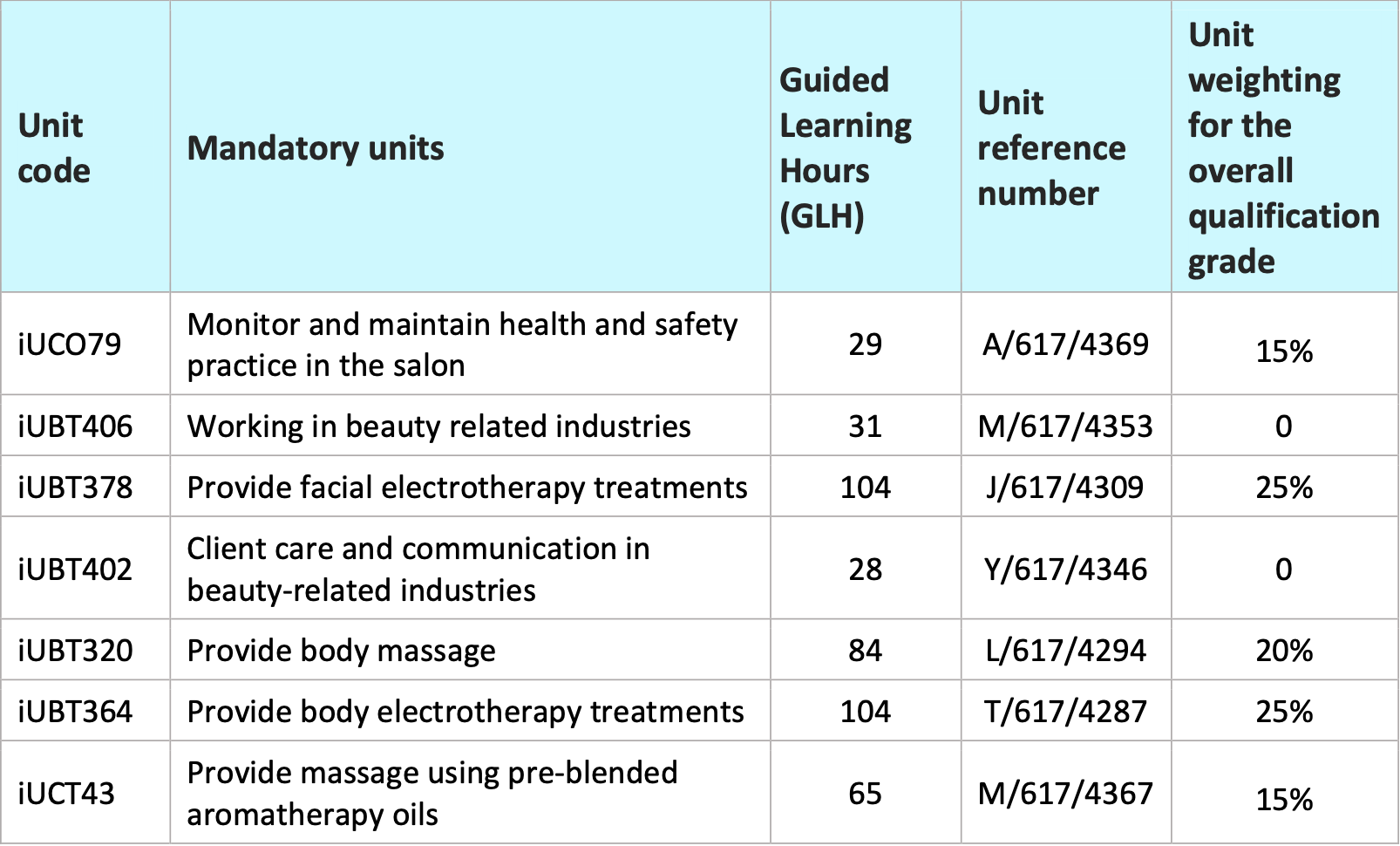
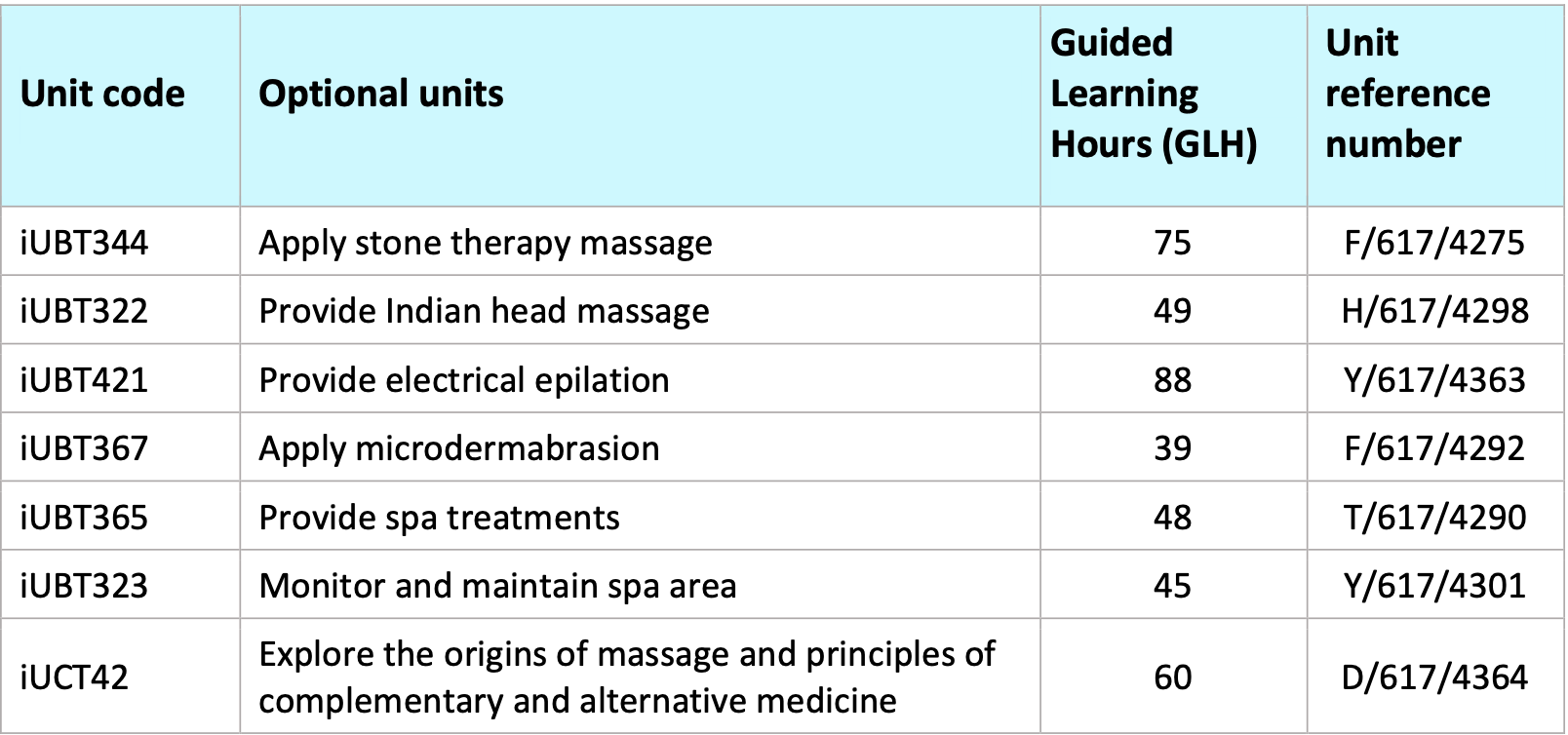
Assessment
All treatment evidence, assignments, internal assessments, and underpinning knowledge must be completed prior to the final practical examination.
The final external practical examination will be carried out by the external examiner at the end of the period of learning. The external examiner will also verify a sample of the treatment evidence, assignments and internal assessment.
